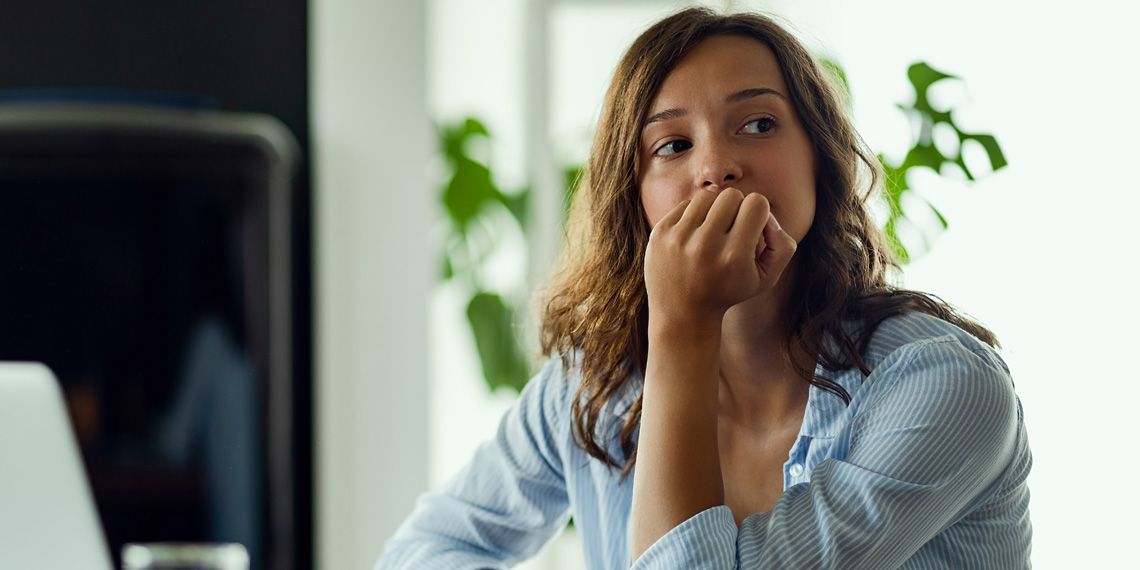A new study published in The Journal of Creative Behavior has found that while anxiety can lead to generating a larger number of ideas, especially when thinking about negative possibilities, it may come at the cost of originality. Researchers found that individuals prone to anxiety, particularly those with a history of mental health challenges or therapy, tend to produce more ideas when asked to consider how situations could go wrong. However, these ideas are less likely to be original compared to those generated when considering positive outcomes.
Creativity is a fundamental human ability that allows us to generate novel and useful solutions to complex problems. Researchers have long been interested in understanding what factors influence creativity, and emotions are known to play a significant part. While positive emotions are generally thought to enhance creativity, the role of negative emotions, like anxiety, is less clear. Some studies suggest anxiety can boost creativity, while others indicate it can hinder it.
The authors of the new study noted that earlier work has shown that negative emotions can have a positive effect, causing an individual to perseverate and be less satisfied with their own work. This complex and sometimes contradictory relationship between emotions and creativity prompted the researchers to investigate further, focusing on how individual differences in anxiety and optimism might shape the creative process.
“My main area of research is dark creativity – or how people get good ideas to do bad things,” explained study author Hansika Kapoor, a researcher at Monk Prayogshala in Mumbai and an affiliate at the University of Connecticut.
“Usually, this research focuses on how creative persons can use their originality to help themselves at the expense of others or outright harm others. I was interested in understanding whether originality can also be used to harm oneself, perhaps through self-sabotage or thinking that fuels anxiety. Therefore, we developed a counterfactual divergent thinking task — basically a task that asks what could go right/wrong in a certain situation.”
“Allowing people to use their creativity to guide ‘what if’ thinking helped us understand how anxiety can increase negative what ifs but optimistic outlooks can reduce such thoughts. In a nutshell, the idea for the paper stemmed from trying to understand how we may be darkly creative to ourselves, limiting our growth.”
Kapoor and her colleagues designed an online study involving 647 participants, primarily from India and the United States. The participants were adults, with an average age of about 22 years, and included a mix of students, employed individuals, and those who were unemployed or retired. Slightly more than half of the sample were women.
The study centered around a series of tasks designed to measure “divergent thinking,” a key aspect of creativity that involves generating multiple solutions to a problem. The participants completed three different divergent thinking tasks.
Real-World Divergent Thinking Task: Participants were presented with a realistic scenario: needing a large sum of money in a short time. They were asked to come up with as many different ways as possible to address this problem.
Positive Counterfactual Divergent Thinking Task: Participants were asked to imagine they were going on a first date. They were then instructed to think of all the ways things could go right or in their favor.
Negative Counterfactual Divergent Thinking Task: Participants were given the same first date scenario, but this time they were asked to think of all the ways things could go wrong or not in their favor.
Participants were randomly assigned to either the positive or negative counterfactual task, ensuring that they only completed one of these two. All participants completed the real-world task.
The researchers assessed the responses to these tasks in several ways. Fluency was measured by simply counting the number of ideas generated. Flexibility was evaluated by determining whether the ideas belonged to different categories. Originality was assessed by how statistically rare or unusual each idea was compared to the ideas generated by other participants. For the real-world task, additional ratings were made for moral valence (whether the idea was morally good, bad, or neutral) and goal-directedness (how likely the idea was to actually solve the problem).
In addition to these tasks, participants completed several questionnaires to assess their personality traits and mental health history. They filled out the State-Trait Anxiety Inventory to measure their general tendency to experience anxiety. The Kaufman Domains of Creativity Scale was used to assess their self-perceived creativity in various areas like everyday life, academics, performance, science, and art.
The Creative Self-Efficacy Scale measured their belief in their own creative abilities and imagination. Finally, the Optimism Scale measured their general level of optimism or positive outlook on life. Participants were also asked about their history of mental health diagnoses and whether they had experience with therapy.
When comparing the different divergent thinking tasks, the researchers found that participants generated more original ideas in the positive counterfactual task compared to the negative counterfactual task. However, they came up with a greater number of ideas overall in the negative counterfactual task compared to the positive one. Both types of counterfactual tasks, whether focusing on positive or negative scenarios, led to higher levels of originality and fluency compared to the real-world divergent thinking task.
Regarding the influence of personality traits, Kapoor and her colleagues found that trait anxiety, especially when combined with past therapy experience or a previous mental health diagnosis, was linked to an increase in the number of ideas generated in the negative counterfactual task. In other words, individuals with higher anxiety and a history of therapy or mental health issues tended to think of more ways things could go wrong.
On the other hand, optimism appeared to act as a protective factor. Optimism was associated with a reduced number of ideas generated in the negative counterfactual task, even among individuals with past therapy experience or mental health diagnoses. This suggests that optimism might buffer the tendency for anxious individuals to dwell on negative possibilities.
“It was quite surprising to see the mirror images of the results for anxiety and optimism!” Kapoor told PsyPost. “I didn’t think that having a positive outlook toward life could mitigate against anxious thinking in such a powerful and direct way.”
“Our findings suggest the importance of promoting optimism through targeted interventions. Therapies that help reframe negative thoughts could transform them into creative opportunities. Future research could examine cultural differences in how emotions influence creativity. It’s also worth exploring the impact of specific therapies and emotional regulation strategies. Refining tools to measure creativity, anxiety, and optimism will provide deeper insights into their relationship.”
Interestingly, men were found to generate more original ideas in the positive counterfactual task compared to women. The study also found that individuals who rated themselves lower in scientific creativity tended to be more original in the real-world divergent thinking task, and those lower in performance creativity were more fluent in the real-world task.
The researchers acknowledge the limitations of their study. First, the study did not examine cultural differences in detail, which could influence how people approach creative tasks and experience emotions like anxiety. Second, the study did not include a specific measure of rumination (repetitive negative thinking), which could have provided a more direct link between anxiety and the generation of negative ideas. Third, the study did not investigate the specific types of therapy participants had received, which could affect how therapy interacts with anxiety and creativity.
Future research could address these limitations by including more diverse cultural groups, measuring rumination directly, and examining different types of therapy and their impact on creative thinking. Additionally, future studies could explore a wider range of “what if” scenarios and use more sophisticated methods to assess the originality of ideas, going beyond simple statistical rarity. The researchers also suggest that future studies could consider differentiating between thinking and creativity tasks more explicitly.
The long-term goal is to “understand more about self-limiting behaviors (such as counterfactual anxious thinking) that can be applied creatively to oneself,” Kapoor said. “This specific line of research would venture more into therapeutic applications as well as self-deception.”
The study, “What Could Go Wrong? Anxiety Fuels, but Optimism Buffers Negative Counterfactual Divergent Thinking,” was authored by Hansika Kapoor, Sarah Rezaei, Hreem Mahadeshwar, and James C. Kaufman.




